
Jupiterimages/Photos.com/Getty Images
Faux fur is a popular fabric for clothing, pillows, blankets and rugs. Burns can result from a dropped cigarette, accidental contact with a candle flame or other mishaps. The longer the fur, the easier it is to fix or disguise the burn mark. It's also easier to repair patterned faux fur (i.e. leopard print), as the pattern makes the repair less obvious. In some cases, the damaged fur can be removed fairly easily, but for larger defects or defects involving short faux fur, the area will need to be concealed with a decorative patch or the entire faux fur panel may need to be replaced.
Trim the burned faux fur away using scissors (for longer fur) or a utility knife (for shorter fur.) If the fur is long and only the ends of the fibers are singed, this should be enough to fix the burn mark.
Look at the burn mark to determine if there is a burn hole in the underlying fabric. If a small hole is present on a fabric with long or medium-length fur (which will disguise the defect), sew the hole closed with a needle and thread using an oversewing stitch (see Resources). For short fur or a large defect, additional measures will be required.
Purchase matching/complementary faux fur to replace the damaged panel or purchase a decorative iron-on patch that can be used to hide the defect.
Sew the decorative patch over the defect using a hemming stitch. Do not use an iron to apply the patch, as the heat will melt the faux fur. If you wish to replace the damaged faux fur panel instead, remove the affected panel using a seam ripper to remove the stitches that affix the damaged panel to the rest of the garment, pillow, etc.
Place the new replacement faux fur face down on a table and place the damaged fabric panel onto the new fabric and pin the two fabrics together around the perimeter.
Cut out the new piece of fabric, using the old piece as a template.
Sew the new fabric panel into the place of the old damaged fabric panel. Generally, it's best to turn the item inside out, then sew the edges together using a running stitch. If it's not possible to turn the item inside out, you can avoid unfinished edges by folding the raw edges under, then sewing the two pieces of fabric together at the folds using an oversewing stitch.
Related Articles
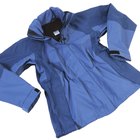
How to Easily Mend a Small Burn in a ...

How to Patch Small Holes in Polar Fleece

How to Fix Cuts in Polyester Clothes
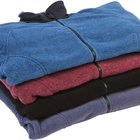
How to Get Cigarette Burns Out of Fleece

How to Lengthen Dress Coat Sleeves

How to Repair a Torn Lambskin Leather ...

How to Fix a Burn Hole in a Polyester ...
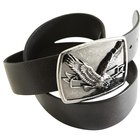
How to Repair a Leather Belt

How to Fix a Wire That Has Come Out of ...

How to Hem a Sequin Dress
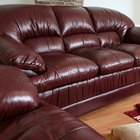
How to Repair Cigarette Burns in Leather

How to Hem Leather With Glue

How to Hand Sew a Tear in Pants

How to Distress the Bottoms of Jeans

How to Alter the Sleeves on Fur Coats
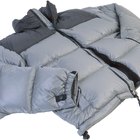
How to Fix Tears in Down Coats
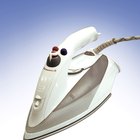
How to Use Laminate Pouches With an Iron

How to Get Fuzz Out of Polyester

How to Fray a Jean Jacket

How to Patch a Waterproof Rain Jacket
References
- Geno Storey; Owner, ABC Interiors; Boston
Photo Credits
Jupiterimages/Photos.com/Getty Images